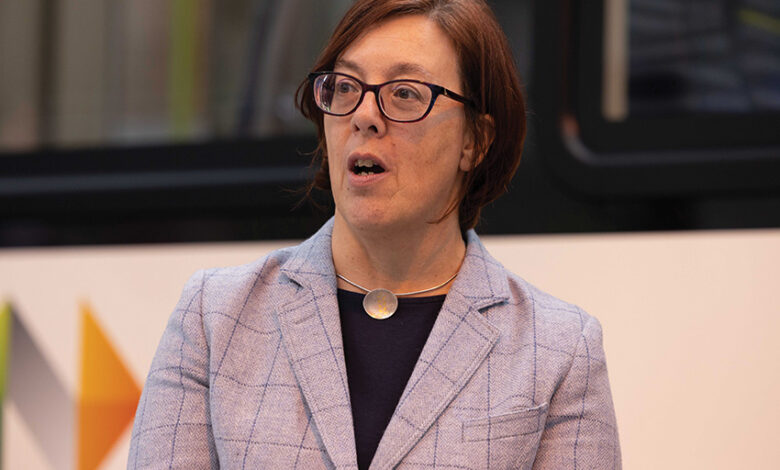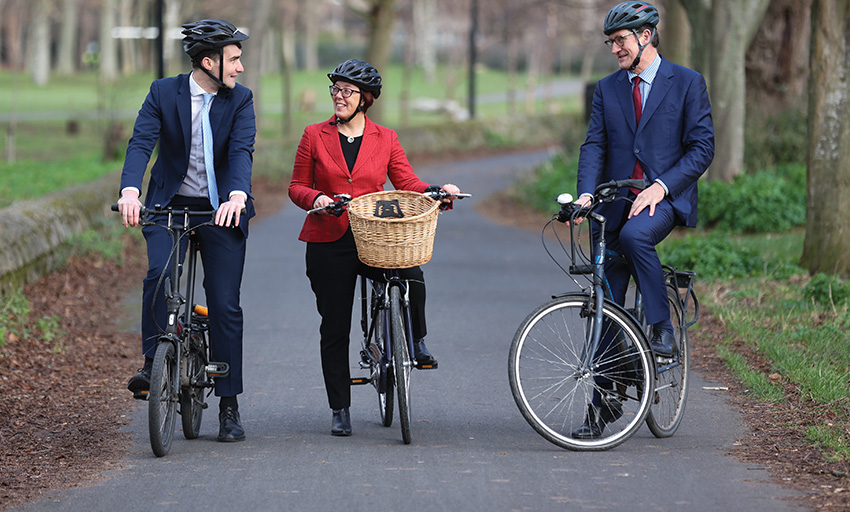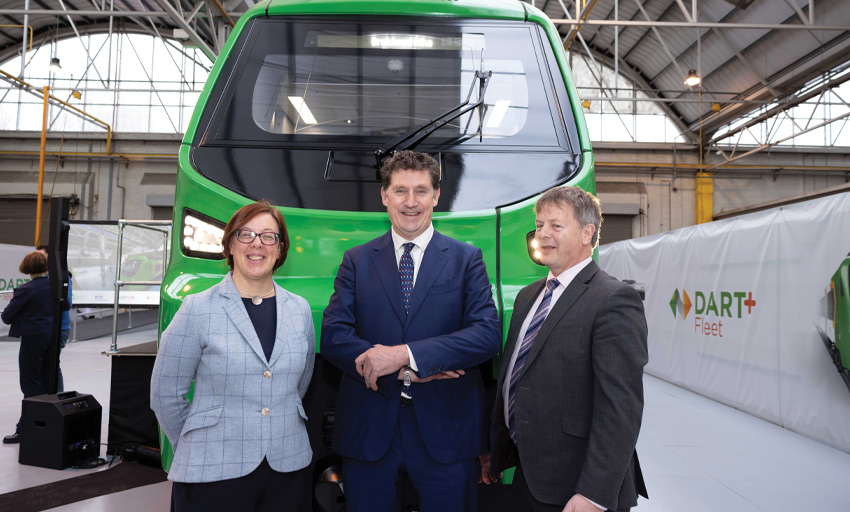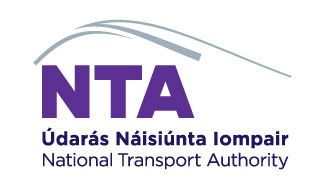Delivering transport infrastructure across the country

As the state agency with primary responsibility for delivering on investment across the country, NTA is now making progress on delivering investment across the country through programmes like active travel, fleet electrification, BusConnects, DART+, MetroLink, and Connecting Ireland, writes Anne Graham, NTA Chief Executive.
Earlier this year the Minister for Transport Eamon Ryan TD signed off on NTA’s Transport Strategy for the Greater Dublin Area 2022-2042. This strategy provides a framework for further investment in services and infrastructure, with the primary objective of substantially increasing the numbers of people using sustainable and active travel in the region.
It provides for investment in bus infrastructure, active travel, heavy rail, light rail and MetroLink and on that basis it will keep NTA, our delivery partners, our operators and our stakeholders busy for some years to come. While it can sometimes appear that progress in delivering these projects is very slow, we are now beginning to see some of them starting to come to fruition, not just in Dublin, but around the country.
Earlier this year for example, Bus Éireann’s town services in Athlone became fully electric when 11 new state-of-the-art electric buses entered service. The new fleet will reduce CO2 emissions by 400,000kg annually and will deliver a quieter, cleaner bus service for the town and passengers. Over 540,000 kilometres are operated on the Athlone town bus service each year, with over 10,000 passengers now using the service weekly – a 20 per cent increase on 2019 figures.
The new buses are being charged using newly installed charging infrastructure supplied with power from the newly constructed electricity substation within the Bus Éireann depot. Construction and installation work here was carried out by ESB Smart Energy Services.
This is just the beginning of the process and later this year and early in 2024, we can look forward to seeing passengers on battery-electric buses in both Dublin and Limerick. Already, the buses are being manufactured and the infrastructure is being installed. When operational, this will provide a better experience for customers and deliver cleaner air and lower emissions for communities everywhere.
There has been progress too on the procurement of fleet for DART+. Some 185 new carriages have been ordered to date, with delivery commencing in 2024 and entering service from 2025. A total of up to 750 carriages are to be ordered over the next decade under a framework contract with leading manufacturer Alstom.
A prototype was unveiled recently in Irish Rail’s facility in Inchicore, and we believe that these new carriages will be transformative, offering potential for independent access for all passengers, improved facilities for families and cyclists across the Dublin Metropolitan Area.
A planning application was submitted last September for MetroLink and consideration of the project is in the hands of An Bord Pleanála. This followed on from the publication by Transport Infrastructure Ireland and NTA of our preferred route.

“This year, substantial investment will fund approximately 1,200 active travel projects, contributing to the development of almost 1,000km of new and improved walking and cycling infrastructure across the country by 2025.”
The start of construction will be determined by the timing and outcome of the statutory planning process. The construction, systems’ installation, testing, and commissioning of a metro system like this is likely to take eight to nine years. In the meantime, a procurement process for the client partner contract is already under way.
We are also working on plans to extend Luas lines and later this year, a railway order application is to be lodged by Transport Infrastructure Ireland for the extension of the Green Line to Finglas. This is a clear example of the kind of progress we are making in our plans to invest in ambitious and exciting sustainable transport solutions. I believe that Luas has the potential to be transformative for this part of the city and that it will further enhance the area for all members of the community.
We have already touched on DART+ fleet, but progress is also being made on the infrastructure aspects of the programme too. Last year a railway order application was submitted by Iarnród Éireann to An Bord Pleanála for DART+ West, followed by one for DART+ South West in March of this year. Public consultation on both DART+ Coastal North and DART+ Coastal South is well under way.
For BusConnects in Dublin, we have already implemented four of the 11 phases of the redesigned network, with more to come this year and next. The public response to the new network has been very positive and we have seen a corresponding surge in passenger numbers.
“Due to the success of the services already in operation, well over 250,000 people now have access to new and enhanced bus services in their locality, with an increase in patronage well in excess of 93 per cent on routes which have already been enhanced.”
On the infrastructure side, planning applications for nine of the 12 Core Bus Corridor schemes have been submitted, with the remaining three to be submitted in the coming weeks, and as soon as they clear that process, we will look to getting construction under way on a phased basis as soon as possible.
Our investment programme in active travel has expanded significantly in recent years. This year, substantial investment will fund approximately 1,200 active travel projects, contributing to the development of almost 1,000km of new and improved walking and cycling infrastructure across the country by 2025. This includes the development of segregated cycle lanes and widened footpaths, new walking and cycling bridges, and new pedestrian crossings.
In total, the 2023 fund allocation for active travel will allow for the progression of 387 projects in the Greater Dublin Area, 250 across other regional cities and a further 502 projects across rural Ireland.
NTA is also closely involved in improving the provision of sustainable transport in our regional cities. In 2021, we published the Cork Metropolitan Area Transport Strategy and implementation of that is already getting under way.
The design for an emerging preferred route for the city’s proposed Luas service for example, is almost complete and will go out for public consultation in the very near future.
In addition, as part of BusConnects Cork, we have published a design for the new bus network and have gone out for two rounds of public consultation on the sustainable transport corridors.
Work has commenced on improvements to commuter rail on the Cobh/Midleton line and Mallow station has been included in the commuter fares zone. A railway order application has been made for the double tracking between Glounthaune and Midleton. Plans are well underway for the provision of a through-platform at Kent rail station.
A proposed new BusConnects network has been published for Galway offering substantial service improvements for the city and suburbs.

On the infrastructure side, the new Salmon Weir sustainable transport bridge opened recently. The development of this world-class shared-use pedestrian and cycle bridge will bring a number of significant benefits to Galway city. These include the removal of current conflicts on the existing 200-year-old bridge; the facilitation of the development of a cross-city public transport corridor over the existing bridge; and the enhancement of links between both sides of the river, by supporting sustainable and active modes of transport.
In addition, a 4km Dublin Road sustainable transport corridor has moved to design stage and a planning application has been lodged for the crucial Cross City Link facilitating bus movements through the city centre.
In Limerick, public consultation on a new proposed BusConnects network of services has concluded. This plan provides for an increase of 70 per cent in service levels, with implementation due to get under way in 2025. Meanwhile, work has commenced on improvements to commuter rail to the city, with a new station for Moyross being planned.
A new BusConnects network is being designed for Waterford, to go to public consultation this year. Work has commenced on the design of a new sustainable transport bridge in the city, with the train station to be relocated as part of the plan.
NTA operates within an overall national policy framework which ensures that all of our plans, projects and proposals are aligned to the likes of the National Development Plan, National Planning Framework, Climate Action Plan, Rural Development Policy, and National Sustainable Mobility Policy. An example of how well that can work is our Connecting Ireland Rural Mobility Plan.
Connecting Ireland is the NTA’s plan to transform rural and interurban mobility by improving bus and rail services across the country over a five-year period up to the end of 2025.
In 2022, we launched Phase 1 of the plan, introducing a wide range of new routes and improvements to public transport users throughout the State. It is one of the most ambitious plans yet for rural transport nationwide.
During 2022, we delivered 38 new and enhanced bus services throughout Ireland, with significant plans for additional bus services in many rural areas this year and in future years.
Due to the success of the services already in operation, well over 250,000 people now have access to new and enhanced bus services in their locality, with an increase in patronage well in excess of 93 per cent on routes which have already been enhanced.
The Connecting Ireland plan has had a transformative impact on rural communities by improving access to high frequency public transport bus services and connecting villages and towns to regional Transport for Ireland (TFI) bus and rail services.
Under the Connecting Ireland Plan, 67 new or enhanced bus services are proposed in 2023, strengthening existing services and connecting more towns and townlands. This is the second of five phases of the rural mobility plan.
Last year almost €4 million was invested in implementing Connecting Ireland bus services, but this year that figure will double to €8.5 million provided by the Department of Transport.
The response by customers to new services in rural Ireland has been very strong, with passenger numbers on buses returning to and surpassing pre-Covid levels. On TFI Local Link services in rural Ireland the annual passenger journey figure for 2019 was 2.5 million. Covid had a serious impact on passenger numbers in 2020 and 2021, but in 2022, they rose to 2.8 million, a recovery of 112 per cent. Those figures increased further in 2023 with over 45,000 passengers travelling on Local Link services every week around the country.
The addition of new and enhanced services nationwide has directly improved access to amenities such as tourist attractions, regional hubs, medical, economic, social, and education opportunities.
Implementation continues at a pace with new and enhanced routes being announced almost on a weekly basis. This ambitious plan will continue to be rolled out up to 2026 which aims to transform sustainable modes of public transport in rural areas across Ireland.
The coming years can be a time of immense optimism for Ireland. As regions develop, as towns grow, and as more and more people look to avail of new employment, education, and social opportunities, connectivity will be of crucial importance.
A transport system that facilitates and stimulates that progress will be the engine that powers growth and development.
That will require the continued delivery of much-needed investment in sustainable transport in communities in every part of the country. That will not be straightforward, and it may be challenging but I believe that NTA is up to that challenge.

T: +353 1 879 8300
E: info@nationaltransport.ie
W: www.nationaltransport.ie





